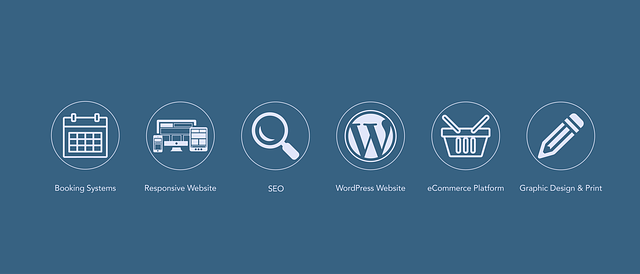Built-up roofing systems are a popular choice for flat commercial buildings due to their multi-layered structure that offers protection and functionality. The system starts with a bitumen-coated base sheet, followed by reinforcing fabrics and an asphalt gravel roof. Each layer serves a specific purpose: preventing water leakage, enhancing structural integrity, and ensuring longevity. Regular maintenance is crucial to extend the lifespan of these systems, which are susceptible to issues like poor adhesion, blisters, and delamination. The future of built-up roofing services includes innovative technologies aimed at increasing durability, sustainability, and energy efficiency, such as self-repairing materials, eco-friendly options, and lightweight gravel systems.
“In the realm of commercial building construction, multi-layered built-up roofing systems stand out as a robust and versatile solution for flat roofs. This comprehensive guide, ‘Understanding Built-Up Roofing Systems,’ delves into the intricate world of these structures, from their foundational layers to advanced applications. We explore how these systems offer unparalleled protection, discuss the benefits for commercial spaces, and provide insights on maintenance, challenges, and emerging trends in built-up roofing services, ensuring optimal performance and longevity.”
- Understanding Built-Up Roofing Systems: A Comprehensive Overview
- The Layers of Protection: Materials and Construction Techniques
- Advantages of Multi-Layered Roofs for Commercial Buildings
- Maintenance and Longevity: Ensuring Optimal Performance
- Common Challenges and Troubleshooting in Built-Up Roofing Services
- Future Trends and Innovations in Built-Up Roofing Systems
Understanding Built-Up Roofing Systems: A Comprehensive Overview

Built-up roofing systems are a common sight on flat commercial buildings, offering both functionality and protection. These multi-layered structures consist of successive applications of bitumen roofing, followed by reinforcing fabrics and gravel roofs. Each layer plays a crucial role in safeguarding the building below from various environmental elements, making built-up roofing services an indispensable aspect of commercial construction.
The process begins with a base sheet, typically made from glass fiber or asphalt-saturated felt, which provides a protective barrier. This is then coated with hot liquid bitumen, a type of petroleum product, creating a sticky layer that binds the subsequent layers together. Reinforcing fabrics, often in the form of polyester or glass mats, are added to enhance structural integrity and prevent tear propagation. The final touch is a gravel roof, usually asphalt gravel, which not only provides an additional protective layer but also helps with heat absorption and reflection, contributing to the overall energy efficiency of the building.
The Layers of Protection: Materials and Construction Techniques

Built-up roofing systems are a multi-layered protective barrier designed for flat commercial roofs. These sophisticated structures consist of several components meticulously engineered to safeguard against the elements. The foundation lies in a strong, water-resistant base, typically composed of a bitumen roofing underlayment that acts as a crucial first line of defense against moisture intrusion.
The subsequent layers build upon this foundation, incorporating materials such as fabric membranes and gravel roofs for added strength and protection. Multi-ply roof systems are assembled with precision, where each layer serves a specific function: preventing water leakage, enhancing structural integrity, and ensuring longevity. This multi-layered approach offers superior durability compared to traditional roofing methods, making built-up roofing services a preferred choice for commercial buildings seeking robust and reliable protection.
Advantages of Multi-Layered Roofs for Commercial Buildings

Multi-layered roofs, often referred to as multi-ply roofs or built-up roofing systems, offer several advantages for commercial buildings. This robust construction method involves layering multiple components like bitumen roofing and a gravel roof, creating a strong and durable protective barrier against environmental elements. The primary benefit lies in their superior resistance to punctures and tears, ensuring the building’s structural integrity is maintained over time.
Moreover, these systems provide excellent insulation, contributing to energy efficiency and reduced heating/cooling costs for commercial spaces. The multi-ply design also allows for easier repair or replacement of individual layers if damaged, prolonging the overall lifespan of the roofing system. This versatility makes built-up roofing services a preferred choice for flat commercial buildings, offering both functionality and aesthetic appeal.
Maintenance and Longevity: Ensuring Optimal Performance

The longevity and optimal performance of built-up roofing systems, often comprised of multiple layers such as a multi-ply roof, depend heavily on regular maintenance. These systems, common in flat commercial buildings, typically feature a gravel roof or bitumen roofing that requires careful upkeep to withstand various environmental challenges. Annual inspections are crucial to identify potential issues early, whether it’s damaged flashing, loose granules, or signs of moisture intrusion.
Proper maintenance includes cleaning the roof surface, repairing or replacing missing or damaged components, and re-sealing any areas showing wear. By keeping on top of these tasks, building owners can significantly extend the life of their built-up roofing services, ensuring continued protection against elements and preserving the structural integrity of the building below.
Common Challenges and Troubleshooting in Built-Up Roofing Services

Built-up roofing systems, while effective for flat commercial buildings, come with their share of challenges. One common issue is the potential for poor adhesion between layers, often due to inadequate preparation or incorrect application techniques. This can lead to blisters, cracks, and even complete delamination, compromising the roof’s integrity. Regular inspection and proper maintenance are crucial to address these problems early. For instance, regular cleaning to remove algae, mold, and dirt, as well as reapplication of coatings, can significantly extend the lifespan of a built-up roofing system.
Another challenge is the management of moisture, especially in colder climates where snow and ice buildup can cause significant pressure. Bitumen roofing, a key component in multi-ply roofs, is sensitive to temperature fluctuations, making it prone to softening or hardening at extreme ends. Gravel roofs, while offering protection against UV radiation, require careful installation to avoid shifting that could disrupt the system’s integrity. Troubleshooting involves understanding these issues and employing solutions such as using reflective coatings for heat management, ensuring proper drainage systems, and adhering to manufacturer guidelines for installation and maintenance.
Future Trends and Innovations in Built-Up Roofing Systems

As technology advances, the future of built-up roofing systems promises exciting innovations designed to enhance durability, sustainability, and energy efficiency. One emerging trend is the integration of smart materials that can self-repair cracks and leaks, extending the lifespan of roofs and reducing maintenance costs for commercial property owners. Additionally, there’s a growing focus on using environmentally friendly materials, such as recycled bitumen and plant-based polymers, to create more sustainable multi-ply roofs. These advancements not only reduce the environmental impact but also contribute to a greener built environment.
Another notable trend is the transition towards more lightweight gravel roof systems, offering significant advantages in terms of reduced load on structures, faster installation, and lower heating/cooling costs due to improved thermal insulation. Furthermore, digital technologies like 3D modeling and advanced monitoring systems are transforming how we design, install, and maintain built-up roofing services. These innovations ensure precise planning, efficient execution, and proactive maintenance, resulting in longer-lasting, high-performance roofs for commercial buildings.
